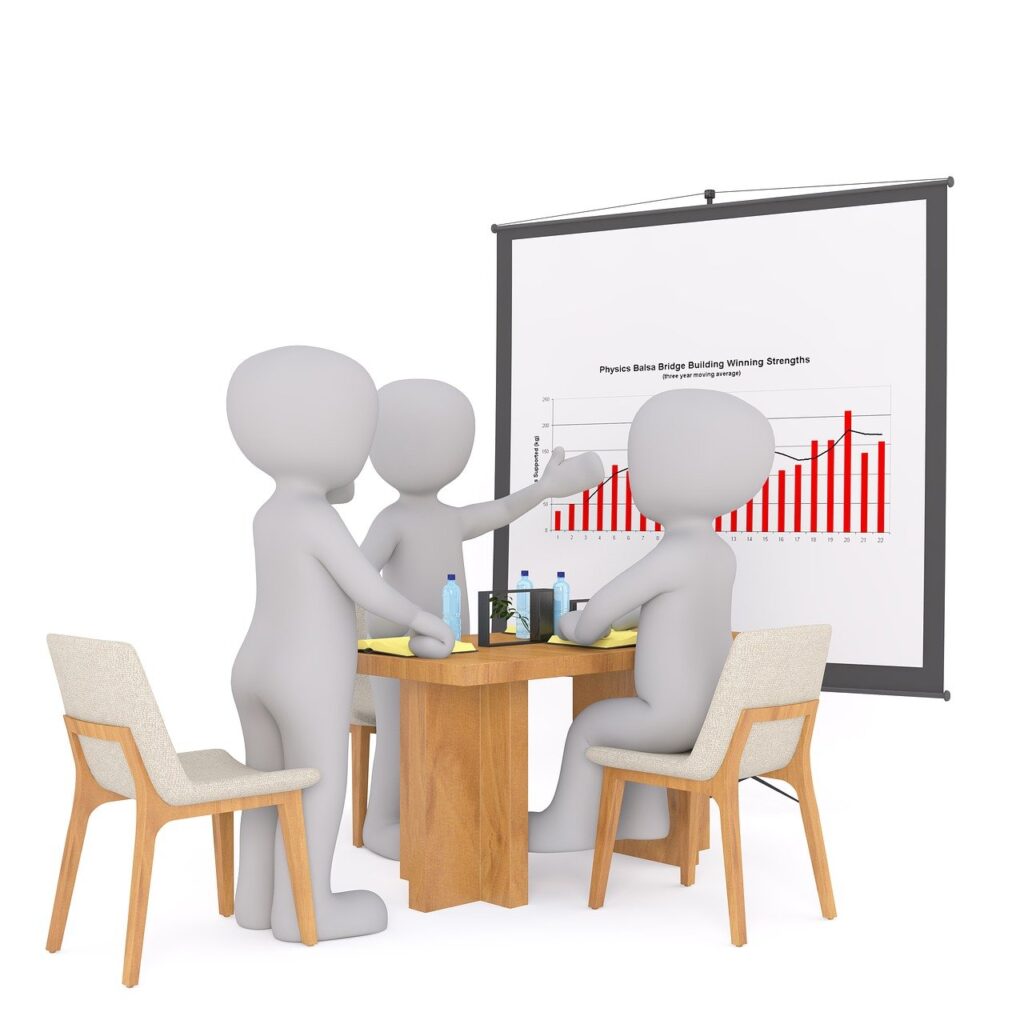How to Implement Circular Economy Principles in Business

How to Implement Circular Economy Principles in Business.
How to implement circular economy principles in business
The circular economy is a new economic model that aims to reduce waste and pollution, keep products and materials in use, and regenerate natural systems. Implementing circular economy principles in your business can help you reduce costs, improve efficiency, and enhance your environmental and social impact.
Here are some possible ways to implement circular economy principles in your business:
1. Circular Economy Principles: Assess your current situation
The first step is to understand your current business model, product life cycle, material flows, environmental footprint, and customer needs. You can use tools such as the Circularity Gap Report or the Circular Transition Indicators to measure your circularity performance and identify the gaps and opportunities for improvement.
Assessing your current situation is the first step in implementing circular economy principles in your business. This involves understanding your current business model, product life cycle, material flows, environmental footprint, and customer needs.
Business model
Your business model describes how your business creates and delivers value to its customers. It includes your products or services, your target market, your pricing strategy, and your cost structure.
Product life cycle
The product life cycle is the series of stages that a product goes through, from its conception to its disposal. It typically includes the following stages: development, introduction, growth, maturity, and decline.
Material flows
Material flows refer to the movement of materials through your business, from the raw materials you use to the products you produce to the waste you generate.
Environmental footprint
Your environmental footprint is the impact that your business has on the environment. It includes factors such as your greenhouse gas emissions, water consumption, and waste production.
Customer needs
Customer needs are the reasons why customers buy your products or services. It is important to understand your customer needs so that you can develop circular solutions that meet their needs.
You can use a variety of tools to assess your current situation, such as:
- Customer surveys to understand your customers’ needs and preferences
- Life cycle assessment to measure the environmental impact of your products or services
- Material flow analysis to track the movement of materials through your business
- Environmental management systems to identify and manage your environmental risks
2. Circular Economy Principles: Define your circular vision and strategy

The next step is to set your circular goals and objectives, aligned with your business vision and values. You can use frameworks such as the Circular Economy Business Model Canvas or the Circular Design Guide to explore different circular business models and strategies, such as product-as-a-service, sharing platforms, modular design, or remanufacturing.
Defining your circular vision and strategy is the second step in implementing circular economy principles in your business. This involves setting your circular goals and objectives, aligned with your business vision and values.
Circular vision
Your circular vision is a statement that describes what you want your business to achieve in terms of the circular economy. For example, your circular vision might be to:
- “Become a zero-waste business”
- “Design and deliver products and services that are fully circular”
- “Contribute to the development of a more circular economy”
Circular goals and objectives
Your circular goals and objectives are specific, measurable, achievable, relevant, and time-bound targets that you want to achieve in order to achieve your circular vision. For example, your circular goals and objectives might be to:
- “Reduce waste by 50% by 2025”
- “Increase the use of recycled materials in our products by 20% by 2027”
- “Develop a product-as-a-service offering for our flagship product by 2029”
Circular business models and strategies
There are a variety of circular business models and strategies that you can implement to achieve your circular goals and objectives. Some common examples include:
- Product-as-a-service: Instead of selling products, you lease or rent them to customers. This model helps to keep products in use longer and reduces waste.
- Sharing platforms: You create a platform that allows customers to share products or services with each other. This model can help to reduce the need for people to own their own products and can extend the lifespan of products.
- Modular design: You design your products in a modular way so that they can be easily repaired, upgraded, or recycled. This model helps to extend the lifespan of products and reduce waste.
- Remanufacturing: You collect used products and refurbish or remanufacture them into new products. This model helps to keep products in use longer and reduces waste.
You can use frameworks such as the Circular Economy Business Model Canvas or the Circular Design Guide to explore different circular business models and strategies and to identify the ones that are most appropriate for your business.
Once you have defined your circular vision and strategy, you can start to develop and implement concrete action plans to achieve your goals and objectives.
Here are some tips for defining your circular vision and strategy:
- Involve your stakeholders. Your circular vision and strategy should be aligned with your business vision and values, and it should be supported by your stakeholders, such as employees, customers, and suppliers.
- Be ambitious. Don’t be afraid to set ambitious goals for your business. The circular economy is a new and emerging field, and there are many opportunities for innovation and disruption.
- Be flexible. The circular economy is constantly evolving, so it is important to be flexible and to adapt your vision and strategy as needed.
By defining a clear and ambitious circular vision and strategy, you can position your business for success in the circular economy.
3. Circular Economy Principles: Design your circular products and services

The third step is to apply circular design principles to your products and services, such as using renewable or recycled materials, minimizing toxic substances, optimizing resource efficiency, extending product lifespan, enabling repair or refurbishment, or facilitating reuse or recycling.
Designing your circular products and services is the third step in implementing circular economy principles in your business. This involves applying circular design principles to your products and services, such as:
- Using renewable or recycled materials: Instead of using virgin materials, use renewable materials such as bamboo or recycled materials such as PET plastic. This helps to reduce the demand for virgin materials and to conserve natural resources.
- Minimizing toxic substances: Use materials and processes that minimize the use of toxic substances. This helps to protect human health and the environment.
- Optimizing resource efficiency: Design your products and services to be as resource-efficient as possible. This means using less materials, energy, and water to produce and use your products and services.
- Extending product lifespan: Design your products to be durable and long-lasting. This helps to reduce the need to replace products as often and to reduce waste.
- Enabling repair or refurbishment: Design your products so that they can be easily repaired or refurbished if they are damaged or become obsolete. This helps to extend the lifespan of products and to reduce waste.
- Facilitating reuse or recycling: Design your products so that they can be easily reused or recycled at the end of their life. This helps to keep materials in use longer and to reduce waste.
Here are some examples of how you can apply circular design principles to your products and services:
- Use renewable materials in your packaging. For example, you could use bamboo or recycled paper for your packaging instead of plastic.
- Design your products to be modular. This makes it easier to repair, upgrade, or recycle your products. For example, you could design your smartphones so that the battery can be easily replaced.
- Offer product-as-a-service. This means leasing or renting your products to customers instead of selling them. This helps to keep products in use longer and reduces waste. For example, you could offer a product-as-a-service offering for your office furniture.
- Set up a take-back and recycling program. This makes it easy for customers to return their used products to you so that you can recycle them. For example, you could set up a take-back and recycling program for your batteries.
By applying circular design principles to your products and services, you can help to reduce waste, conserve resources, and protect human health and the environment.
Here are some tips for designing circular products and services:
- Start with the end in mind. Think about how your product or service will be disposed of at the end of its life. This will help you to design your product or service in a way that facilitates reuse or recycling.
- Use a systems approach. Consider the entire product life cycle, from raw material extraction to end-of-life management, when designing your product or service. This will help you to identify opportunities to reduce waste and optimize resource efficiency.
- Collaborate with others. Collaborate with your suppliers, customers, and other stakeholders to design circular products and services. This will help you to ensure that your products and services meet the needs of your stakeholders and that they can be implemented successfully.
By following these tips, you can design circular products and services that will help you to achieve your environmental and business goals.
4. Circular Economy Principles: Engage your stakeholders

The fourth step is to communicate and collaborate with your stakeholders, such as suppliers, customers, employees, investors, regulators, or competitors. You can use tools such as the Stakeholder Mapping Canvas or the Value Proposition Canvas to identify and prioritize your key stakeholders, understand their needs and expectations, and create value propositions that address their pain points or gain points.
Engaging your stakeholders is the fourth step in implementing circular economy principles in your business. This involves communicating and collaborating with your stakeholders, such as suppliers, customers, employees, investors, regulators, or competitors.
It is important to engage your stakeholders because they can play a vital role in helping you to achieve your circular goals and objectives. For example, your suppliers can help you to source renewable or recycled materials. Your customers can help you to develop and implement circular products and services. Your employees can help you to implement circular practices in your operations.
There are a variety of tools and techniques that you can use to engage your stakeholders. Some common examples include:
- Stakeholder mapping: Stakeholder mapping is a technique that can help you to identify and prioritize your key stakeholders. It can also help you to understand their needs and expectations.
- Value proposition canvas: The value proposition canvas is a tool that can help you to create value propositions for your stakeholders. A value proposition is a statement that describes how your product or service will benefit the customer.
- Focus groups: Focus groups are a way to gather feedback from a small group of people. You can use focus groups to get feedback on your circular products and services, or to learn more about your stakeholders’ needs and expectations.
- Surveys: Surveys are a way to gather feedback from a large group of people. You can use surveys to get feedback on your circular products and services, or to learn more about your stakeholders’ needs and expectations.
- One-on-one meetings: One-on-one meetings are a way to have more in-depth conversations with your stakeholders. You can use one-on-one meetings to learn more about their needs and expectations, and to get their feedback on your circular products and services.
When engaging your stakeholders, it is important to be transparent and honest about your circular goals and objectives. It is also important to listen to their feedback and to be willing to make changes to your plans based on their feedback.
Here are some tips for engaging your stakeholders:
- Start by identifying your key stakeholders. Who are the people and organizations that will be most affected by your transition to a circular economy?
- Once you have identified your key stakeholders, take the time to understand their needs and expectations. What are their pain points? What are their goals?
- Develop value propositions for each of your key stakeholders. How will your transition to a circular economy benefit them?
- Communicate with your stakeholders on a regular basis. Keep them updated on your progress and get their feedback.
- Be open to feedback and be willing to make changes to your plans based on the feedback you receive.
By engaging your stakeholders, you can build support for your transition to a circular economy and increase your chances of success.
5. Circular Economy Principles: Implement your circular solutions

The fifth step is to execute your circular solutions and monitor their progress and impact. You can use tools such as the Lean Startup Methodology or the Agile Project Management to test your assumptions, validate your hypotheses, collect feedback, measure results, and iterate or pivot as needed.
Implementing your circular solutions is the fifth step in implementing circular economy principles in your business. This involves executing the plans that you have developed to achieve your circular goals and objectives.
There are a variety of tools and techniques that you can use to implement your circular solutions. Some common examples include:
- Lean Startup Methodology: The Lean Startup Methodology is a process for developing and launching new products and services. It is based on the idea of building, measuring, and learning. This means that you build a small version of your product or service, test it with customers, and learn from the feedback you receive. You then use this feedback to improve your product or service and to launch it to a wider market.
- Agile Project Management: Agile Project Management is a framework for managing projects in an iterative and incremental way. This means that you break the project down into smaller tasks, work on one task at a time, and get feedback from stakeholders throughout the project. This helps to ensure that the project meets the needs of the stakeholders and that it is delivered on time and on budget.
When implementing your circular solutions, it is important to monitor their progress and impact. This will help you to identify any potential problems and to make necessary adjustments. You can use a variety of tools to monitor the progress and impact of your circular solutions, such as:
- Key performance indicators (KPIs): KPIs are specific, measurable, achievable, relevant, and time-bound targets that you use to measure the progress and impact of your circular solutions. Some examples of KPIs for circular economy initiatives include:
- Waste reduction rate
- Use of renewable materials
- Product lifespan
- Customer satisfaction
- Data collection and analysis: You can collect data from a variety of sources, such as customer surveys, employee feedback, and operational data. This data can be analyzed to identify trends and patterns, and to measure the progress and impact of your circular solutions.
- Reporting: You should regularly report on the progress and impact of your circular solutions to your stakeholders. This will help you to keep them updated on your progress and to get their feedback.
By monitoring the progress and impact of your circular solutions, you can ensure that they are meeting your expectations and that they are having a positive impact on your business and the environment.
6. Circular Economy Principles: Innovate and scale up

The sixth step is to continuously innovate and scale up your circular solutions, leveraging new technologies, partnerships, or markets. You can use tools such as the Business Model Innovation Toolkit or the Scaling Playbook to explore new ways of creating and delivering value, reaching new customers or segments, or expanding to new regions or sectors.
Here are some additional tips for implementing circular economy principles in your business:
- Get started with the low-hanging fruit. Look for opportunities to reduce waste, save costs, and improve efficiency in your current operations.
- Take a holistic approach. Consider the entire product life cycle, from raw material extraction to end-of-life management.
- Collaborate with your stakeholders. Work with your suppliers, customers, and other partners to develop and implement circular solutions.
- Be innovative. There is no one-size-fits-all approach to the circular economy. Be creative and explore new ways to design, produce, and deliver your products and services.
Green Loans: Companies Raise Over 180 Billion Know It All
How to Create a Customer Journey Map






